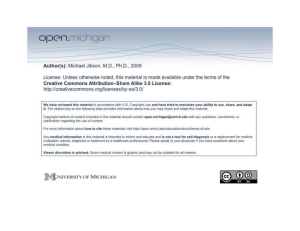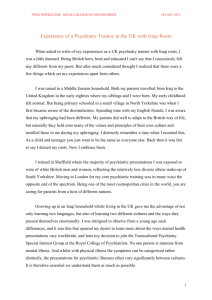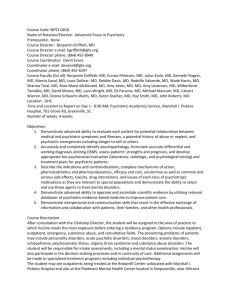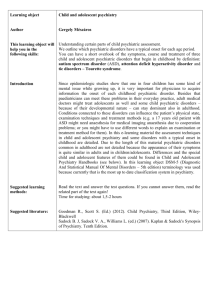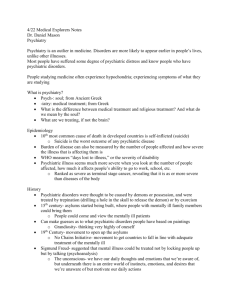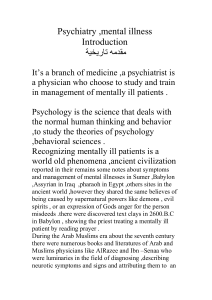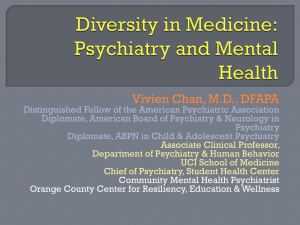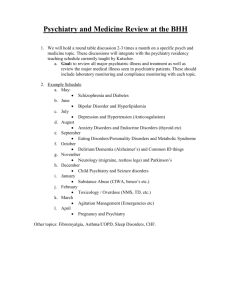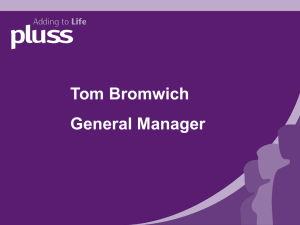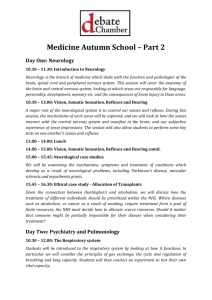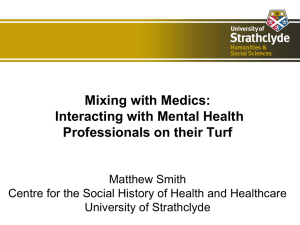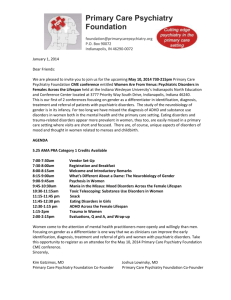What-is-Psychology-Yudofsky-060812
advertisement
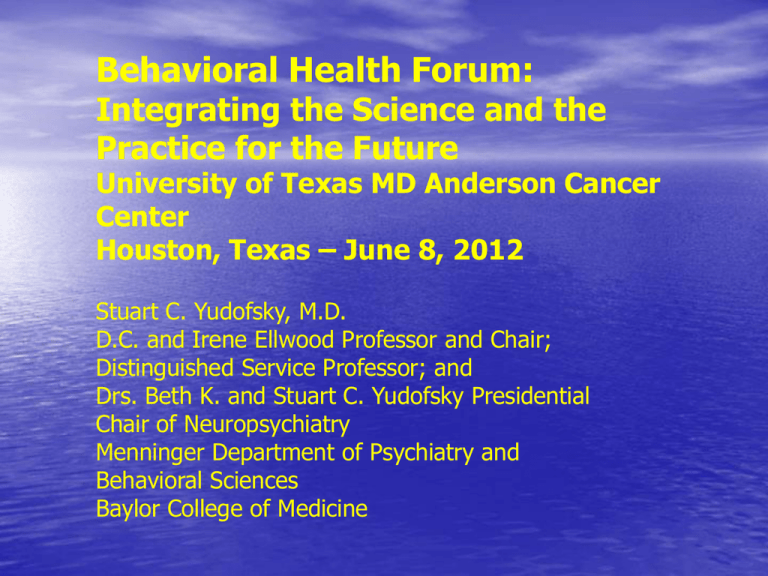
Behavioral Health Forum: Integrating the Science and the Practice for the Future University of Texas MD Anderson Cancer Center Houston, Texas – June 8, 2012 Stuart C. Yudofsky, M.D. D.C. and Irene Ellwood Professor and Chair; Distinguished Service Professor; and Drs. Beth K. and Stuart C. Yudofsky Presidential Chair of Neuropsychiatry Menninger Department of Psychiatry and Behavioral Sciences Baylor College of Medicine What is Psychiatry? 1. A specialty of medicine… 2. Dealing with dysfunctions and illness… 3. That affect behavior, mood, thought and perception… What is the “organ” of Psychiatry? Houston… 1. We’re not urologists 2. We’re not cardiologists The Human Brain • • • • • • • • • 100 billion nerve cells-mostly neurons Hundreds of trillions of synapses 60 known neurotransmitters 300 putative neurotransmitters Enzymes – Synthesis – Degradation Transport mechanisms, storage, and release 2 to 10+ receptor subtypes Second messenger systems Ion channels-binary action potentials of axons THE DSM-IV-TR 1. Utilizes objectifiable clusters of signs and symptoms 2. To define specifically over 300 psychiatric illnesses 3. Common diagnostic language worldwide among mental health professionals Biopsychosocial Approach 1. Biological features a. Genetic predispositions b. Brain lesions and disorders c. Endocrine dysfunctions d. Toxins (e.g. alcohol) e. Somatic disorders (e.g. diabetic Ketoacidosis) Biopsychosocial Approach 2. Psychological features a. Life experience b. Memory stores c. Unconscious processes d. Thinking patterns Biopsychosocial Approach 3. Social features a. Cultural effects b. Family setting c. Occupation d. Interpersonal relationship e. Spiritual life f. Values The Human Costs of Mental Illness and Addictive Disorders -StigmaStigma Stigma, fear, and embarrassment are universally associated with mental illness. Many Americans with treatable psychiatric disorders refuse to seek care. A survey conducted by the National Mental Health Association (NHMA) of 1022 adults found: 1. Half of American adults reported that they or a family member have suffered from depression. 2. Forty-three percent see depression as a “personal weakness,” with another 11% uncertain whether it is a personal weakness or a health problem. 3. Two-thirds of those suffering from depression will not seek treatment. Public Perceptions of Mental Illness Due to Emotional Weakness 71% Caused by Bad Parenting 65% Victim’s Fault; Can will it Away 45% Incurable 43% Consequence of Sinful Behavior Has Biological Basis; Involves the Brain 35% 10% The Good News About Mental Illness and Psychiatry • Through neuroscience discovery, important knowledge is being gained about the causes and effective treatments of psychiatric disorders. • Examples: 70% of the people with manic depression respond dramatically to lithium treatment. • The use of lithium has been estimated to have saved $6.5 billion annually in treatment costs alone. The Good News About Mental Illness and Psychiatry • Between 80-90% of individuals suffering from major depression respond fully to psychiatric treatment that includes both medications and counseling. The Good News About Mental Illness and Psychiatry • Increasingly neuroscience research is shedding light as to the causes of such illnesses as Alzheimer’s disease, schizophrenia, and even alcoholism and other substance use disorders. • These discoveries open the way to innovative pharmacologic and other types of biological interventions. The Promise of Biological Research 1. Genetics a. Localization on chromosomes of the genetic bases of specific psychiatric illness b. Unlock physiological processes by which genes “trigger” psychiatric disorders c. Development of tests to diagnose people at risk of transmitting severe psychiatric disorders d. Development of more specific interventions The Promise of Biological Research 2. Neuroscience Discovery a. Major technological advances in neuroscience research will be applied to psychiatric questions such as the development of pharmacologic and electrophysiologic treatments. b. Example-Deep Brain Stimulation for major depression and OCD. The Promise of Biological Research 3. Brain Imaging a. Magnetic Resonance Imaging (MRI) b. Regional Cerebral Blood Flow (RCBF) c. Positron Emission Tomography (PET) d. Single Photon Emission Computer Tomography (SPECT) Views of the Brain Left Motor Cortex Activation
